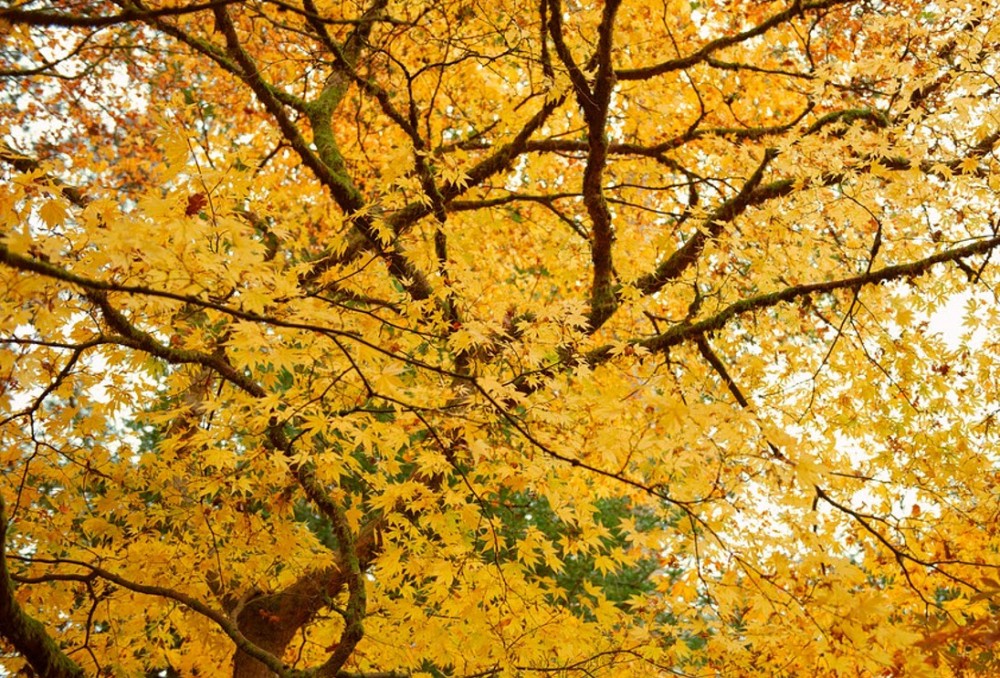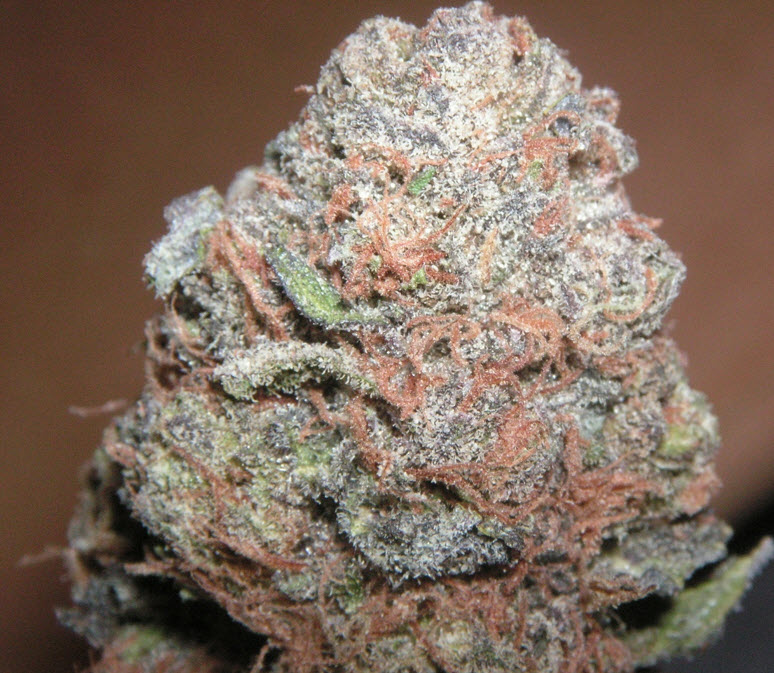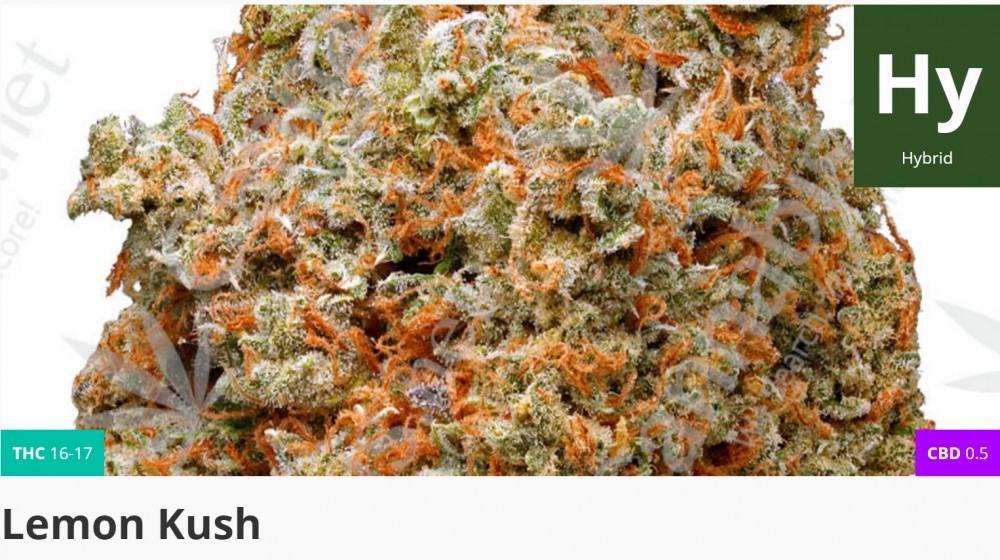Cannabis comes in a variety of different sizes, strains, shapes, and even colors. Many people forget that it’s a flower, and a very beautiful one. For example, a marijuana plant can be red, black, blue, purple, yellow, pink, or even combine multiple colors.
If you are a grower and regularly visit a grow site, chances are you’ve seen that some plants change color during the flowering period. The reason for this is genetics. A wide variety of cannabis strains come with different cannabinoid ratios and anthocyanin.
What is Anthocyanin?
Anthocyanin is a powerful biological compound present in all plants. It’s responsible for the bright changes in plant colors when summer turns to fall. In fact, this change is often referred to as “the fall effect.”

In the early fall, the temperature drops, and tree leaves turn from green to gold, orange, red, or yellow. The reason for this change is the cooler temperature that inhibits the production of chlorophyll, a component vital to photosynthesis.
Anthocyanin, which is present within the vacuole of the cells in plants tissues, activates its coloring pigment as a response to the temperature change. As the result, plants change their color.
Anthocyanin can fall anywhere on a spectrum of blue or purple but the color depends on pH level and strain genetics. For example, a strain’s growth process triggers genes that produce unique color ranges. Here are some other phytochemicals apart from Anthocyanin and their colors:
Lycopene – Red
Carotenoids – Yellow
Chlorophyll – Green
Anthoxantin – White
Simply explained, when a marijuana plant feels that the harvest time is close, nature invokes the color change, enabling the flowers to mature, just like the fall leaves. During the maturation period, each phytochemical blossoms, allowing us to see the full-color spectrum.
Just a decade ago, blue and purple marijuana strains were hard to come by. Varieties such as Purple Passion, Purple Urkle, and other purple-colored strains are the result of a long process of selective breeding, which developed increased production of purple, red and other pigments.
Purple and Blue Strains
Purple is the second most common color variation. Some strains have so much anthocyanin that you don’t even need to reduce temperature to trigger the process of color change. For example, strains such as Purple Kush, Grandaddy Purple, Urkle, Forbidden Fruit, Blackberry Kush, Purple Diesel, and others naturally start to lose the green chlorophyll at the end of their lives.

For example, the color of the buds of Forbidden Fruit strain range from forest to vibrant greens with shades of blue, purple, and even pink.
Although many people know that color doesn’t increase THC levels in marijuana plants, a purple or blue weed is like a holy grail to them. If you want to try to grow your own colorful weed, here’s what you should do:
Grow carefully by controlling the temperature. This means slightly reducing the temperature to mimic fall temperatures at the end of the growing season when chlorophyll starts to break down (below 50 degrees Fahrenheit). Do this during the nighttime cycle every night
These colors are rare but that doesn’t mean that you can’t buy and try to grow them yourself. In fact, if you do, you may be rewarded with a gorgeous thing rich in THC. Many cannabis strains express pink and red coloration in a variety of ways; for example, Pink Berry strain bred by Apothecary Genetics has dusky, rose-colored buds.
Perhaps due to their good looks, red and pink strains are being used more and more these days, For example, one of the strains that carry dominant red tones is Pink Flower Shaman, bred from Skunk and Purple #1, has a beautiful red appearance as well as anti-depression effect.
To grow red or pink weed, you need to:
Choose high-quality genetics. Given that these colors are pretty rare, it’s critical to select a strain that produces pink buds, not just pink coloration in the leaves
Keep cool temperatures. This rule applies here as well: keep the nighttime temperature to mimic chilly temperatures below 70°F (21°C) but higher than 65°F (18°C) to facilitate the dominance of colorful phytochemicals
Use quality light. This is a major factor that influences growth and gives the marijuana the intensity needed to coax out the colors.
Yellow and Orange Strains
As it was mentioned above, carotenoid is the phytochemical that gives cannabis hues of yellow, orange, and gold. The list of cannabis strains that have these colors as predominant includes Kandy Skunk, Wicked OG, Lemon Kush, Olive Oyl, and Grapefruit.
Let’s discuss Lemon Kush strain to give you an idea of the best growing conditions to increase the color. This hairs and buds of Lemon Kush turn yellow/orange if the alkalinity is increased by the end of the flowering phase. You can achieve that by providing nutrient-rich growing soil added with organic matter.

Cannabis grows best in soil with a pH between 5.8 and 6.4
Does Color Affect Potency?
Unfortunately, the color of cannabis has a zero impact on potency, so even if you achieve these beautiful shades, that won’t mean that your plants have increased THC or CBD levels.

 cannabis.net
cannabis.net
If you are a grower and regularly visit a grow site, chances are you’ve seen that some plants change color during the flowering period. The reason for this is genetics. A wide variety of cannabis strains come with different cannabinoid ratios and anthocyanin.
What is Anthocyanin?
Anthocyanin is a powerful biological compound present in all plants. It’s responsible for the bright changes in plant colors when summer turns to fall. In fact, this change is often referred to as “the fall effect.”

In the early fall, the temperature drops, and tree leaves turn from green to gold, orange, red, or yellow. The reason for this change is the cooler temperature that inhibits the production of chlorophyll, a component vital to photosynthesis.
Anthocyanin, which is present within the vacuole of the cells in plants tissues, activates its coloring pigment as a response to the temperature change. As the result, plants change their color.
Anthocyanin can fall anywhere on a spectrum of blue or purple but the color depends on pH level and strain genetics. For example, a strain’s growth process triggers genes that produce unique color ranges. Here are some other phytochemicals apart from Anthocyanin and their colors:
Lycopene – Red
Carotenoids – Yellow
Chlorophyll – Green
Anthoxantin – White
Simply explained, when a marijuana plant feels that the harvest time is close, nature invokes the color change, enabling the flowers to mature, just like the fall leaves. During the maturation period, each phytochemical blossoms, allowing us to see the full-color spectrum.
Just a decade ago, blue and purple marijuana strains were hard to come by. Varieties such as Purple Passion, Purple Urkle, and other purple-colored strains are the result of a long process of selective breeding, which developed increased production of purple, red and other pigments.
Purple and Blue Strains
Purple is the second most common color variation. Some strains have so much anthocyanin that you don’t even need to reduce temperature to trigger the process of color change. For example, strains such as Purple Kush, Grandaddy Purple, Urkle, Forbidden Fruit, Blackberry Kush, Purple Diesel, and others naturally start to lose the green chlorophyll at the end of their lives.

For example, the color of the buds of Forbidden Fruit strain range from forest to vibrant greens with shades of blue, purple, and even pink.
Although many people know that color doesn’t increase THC levels in marijuana plants, a purple or blue weed is like a holy grail to them. If you want to try to grow your own colorful weed, here’s what you should do:
Grow carefully by controlling the temperature. This means slightly reducing the temperature to mimic fall temperatures at the end of the growing season when chlorophyll starts to break down (below 50 degrees Fahrenheit). Do this during the nighttime cycle every night
- Use LED lights. They can facilitate the production of anthocyanin on specific spectrums
- Don’t believe those saying that depriving your plants of oxygen, carbon dioxide, or other gases facilitates change color. The only thing it really does is hurting your cannabis.
These colors are rare but that doesn’t mean that you can’t buy and try to grow them yourself. In fact, if you do, you may be rewarded with a gorgeous thing rich in THC. Many cannabis strains express pink and red coloration in a variety of ways; for example, Pink Berry strain bred by Apothecary Genetics has dusky, rose-colored buds.
Perhaps due to their good looks, red and pink strains are being used more and more these days, For example, one of the strains that carry dominant red tones is Pink Flower Shaman, bred from Skunk and Purple #1, has a beautiful red appearance as well as anti-depression effect.
To grow red or pink weed, you need to:
Choose high-quality genetics. Given that these colors are pretty rare, it’s critical to select a strain that produces pink buds, not just pink coloration in the leaves
Keep cool temperatures. This rule applies here as well: keep the nighttime temperature to mimic chilly temperatures below 70°F (21°C) but higher than 65°F (18°C) to facilitate the dominance of colorful phytochemicals
Use quality light. This is a major factor that influences growth and gives the marijuana the intensity needed to coax out the colors.
Yellow and Orange Strains
As it was mentioned above, carotenoid is the phytochemical that gives cannabis hues of yellow, orange, and gold. The list of cannabis strains that have these colors as predominant includes Kandy Skunk, Wicked OG, Lemon Kush, Olive Oyl, and Grapefruit.
Let’s discuss Lemon Kush strain to give you an idea of the best growing conditions to increase the color. This hairs and buds of Lemon Kush turn yellow/orange if the alkalinity is increased by the end of the flowering phase. You can achieve that by providing nutrient-rich growing soil added with organic matter.

Cannabis grows best in soil with a pH between 5.8 and 6.4
Does Color Affect Potency?
Unfortunately, the color of cannabis has a zero impact on potency, so even if you achieve these beautiful shades, that won’t mean that your plants have increased THC or CBD levels.

Why Does Cannabis Change Colors?
Also, we learned that to produce colorful buds, you have to keep in mind that there are three essential requirements: pH, temperature, and illumination.
